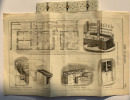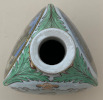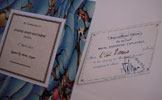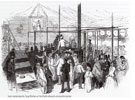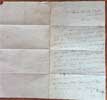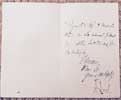Her Majesty the Queen and Prince Philip, Duke of Edinburgh.
CORPORATION OF LONDON LUNCHEON AT GUILDHALL to HER MAJESTY THE QUEEN and HIS ROYAL HIGHNESS THE PRINCE PHILIP, DUKE OF EDINBURGH Upon Their return from Their Tour of Commonwealth and other Countries FRIDAY, 10th MARCH, 1961 The Right Honourable the Lord Mayor SIR BERNARD NATHANIEL WALEY-COHEN. COLONEL RICHARD HOME STUDHOLME, O.B.E., M.A., Alderman. ADAM KENNEDY KIRK Sheriffs. WALTER BASIL HOLDEN Chairman of the Special Reception Committee.
285x210mm. A highly decorated menu in hard cardboard with folded outer cover and 2 folded sheets inside making 4 leaves and eight pages. Top cover. [1] Title page. 1p Guildhall history. 1p Music Programme by the Royal Marine Orchestra. 1p Menu and Wines. 1p Toasts. 2p Names of the Special Reception Committee. 1p Explanation of the cover design. [1] Back cover plain. Inside are 2 folded sheets with Coats of Arms and the precise ceremonial arrangements for the day. All sheets held together with a red and white decorative cord. Housed in a neat marbled cardboard folder with a label on the front cover. A very clean, handsome item of Royal ephemera.
- The Queen and Prince Philip had just visited India, Pakistan, Nepal and Iran. The very colourful water-coloured front cover of the menu depicts impressions of the Commonwealth tour just undertaken. At the top are two drawings of Buckingham Palace and London Airport, depicting points of departure for the tour. In the left panel is the 238 foot Qutab Minar, Delhi, one of the highest stone towers in the world. This is followed at the bottom left, by the Taj Mahal at Agra. On the bottom right we find an impression of Mount Everest in Nepal. In the lower portion of the right panel an image of an Iranian mosque with beautiful Minarets. Lastly above this, two vignettes of Pakistan; Frere Hall, Karachi and the Harbour. On page 2 an essay on the interesting history of the Guildhall. We learn that the Hall and its environs have been consecrated to civic government for more that 1000 years. Two major fires in 1666 and 1941 enveloped the hall. The crypt, porch and mediaeval walls are still original, emerging from the flames without irreparable damage. Each year the Mayor and Sheriffs are elected by the Liverymen after meeting in the Common Hall. In the UK, the Guildhall is one of the most important places of high ceremony. It hosts many important banquets to the Sovereign and Members of the Royal Family, Prime Ministers, Ministers of State and Foreign Leaders. A very interesting document as well as being a menu.


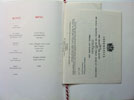

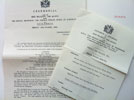
click on image to enlarge

Ephemera category
ref number:
11142 














